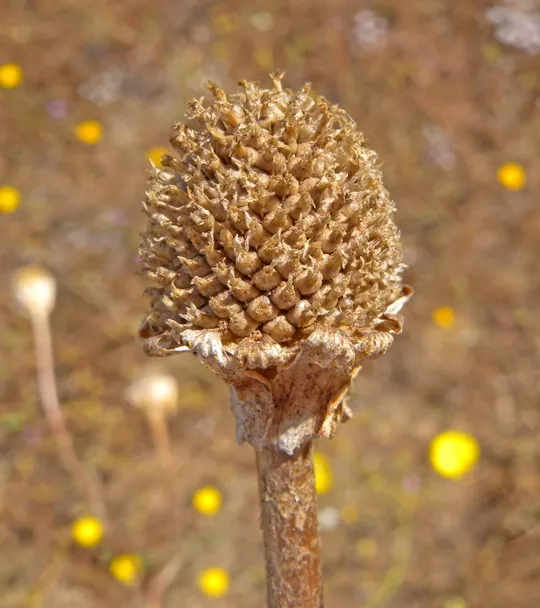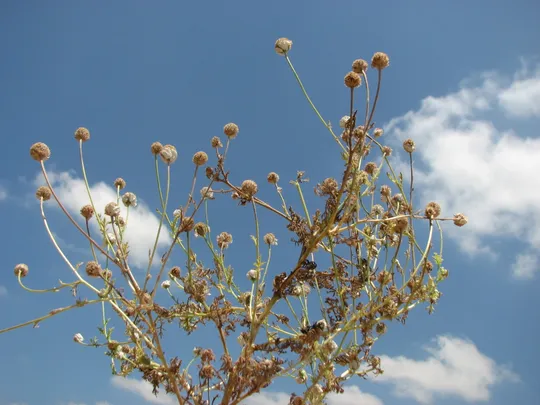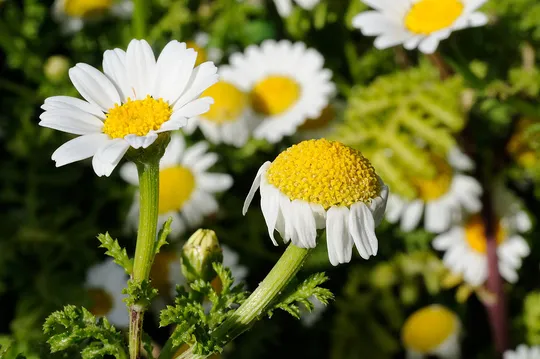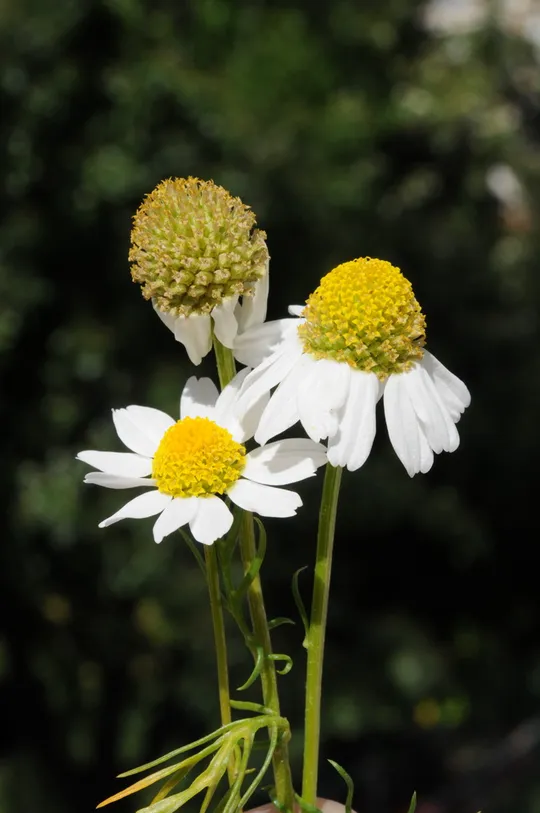Transparent Chamomile
Anthemis hyalina
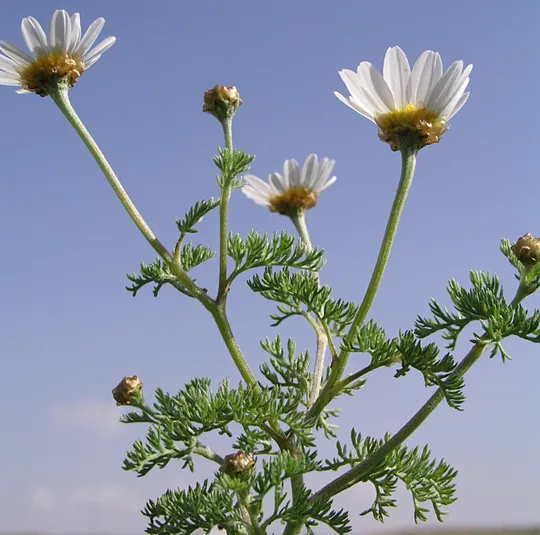
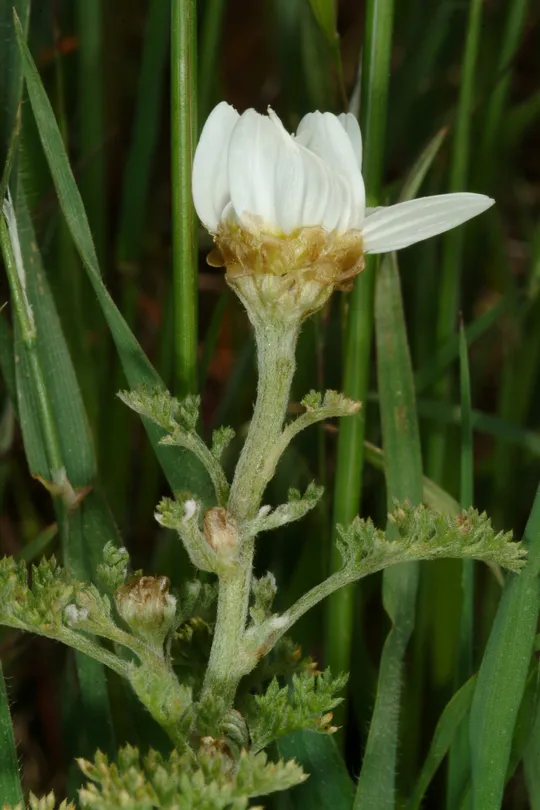

Anthemis hyalina grows in the
Judean Mountains and in Samaria on 11 known sites and it is estimated that
there are actually 15 sites. In the Judean Mountains all the sites are located
in the southern Mount Hebron: in the area of Pnei Hever, Ma'on, Kiryat Arba, Mitspe
Yair and Metsadot Yehuda at altitudes of 800 m or more. Oz Golan found A. hyalina in Kida in Samaria in 2008 as a new plant for the region. The plant
was first found in Israel near Bani Na’im in 1934 and was found again on the Ma'on
Ridge in 1967 by Ziva Yavin. Today it dominates in the spring on the
mountainous ridges in the region. In the spring of 2003 the plant was observed
on large expanses in the entire area of the Zif Ruins, Mitspe Yair and up to Ma'on.
Stony slopes in the high Southern
Hebron Mountain transition zone, there it grows in scrubland of Sarcopoterium
spinosum, Astragalus bethlehemiticus and Eryngium glomeratum.
In the Flora Palaestina it was described from abandoned fields, roadsides and
fallow fields, which may be a secondary habitat in areas on which it is episodic.
For the genus – see Anthemis philistea.
A.
hyalina belongs to A. hyalina group in
the section Anthemis. This group includes 12 species characterized by
involucral bracts with very broad membranous margins and ribbed achenes without
tubercles. Only two of the species in this group grow in Israel – A. hyalina and A.
hermonis (Yavin, 1971). There are scientists who also include A. rascheyana and A. leucanthemifolia in the
group. The species in the
group grow mainly in the Irano-Turanian region in the high mountains of the
Fertile Crescent, and a few penetrate to the Mediterranean region in southern
Turkey. Regarding dispersal strategy, the group includes both species that disperse
their achenes immediately upon ripening as well as synaptospermic species whose dispersal unit is an
entire inflorescence that disperses the achenes gradually. A. hyalina is
a very close specie to A. rascheyana. The two species are easily recognizable by the
broad light brown membranous margins of the involucral bracts. The distinction
between them is difficult: according the Flora Palaestina and the Analytical
Flora, A. hyalina has short achenes without clear ribs along its
length while A. rascheyana has cylindrical achenes with clear ribs, 4-5
times longer than their width. We believe both of these species can be considered
as a single taxon. This can be inferred from the work done by Israeli scientists
who studied the genus Anthemis, who identified the two species from the
same site on the Hermon Heights. Only one morphologically variable species has
been known from there for many years. The morphological variation includes
features characteristic of both species. The Flora notes A. rascheyana
(Boiss) as growing in Moab in Jordan. Dominant carpets of this taxon were
indeed found in the Kereh Heights in southern Moab at an altitude of 900-1200
meters, but it can be assumed with certainly that A. rascheyana is
identical in Jordan too with A. hyalina characteristic of the high
mountains of the Fertile Crescent. A. hermonis Eig, which was described
from northeastern Mount Hermon, is also similar to A. hyalina (it was also identified in the tragacanth
zone on one of the extensions of Mount Hermon in the same population in which A.
hyalina
and A. rascheyana
were identified
by Yavin (1971) and Feinbrun (1986).
·
Most of the Anthemis hyalina
sites have been documented only in recent years, but it can be assumed that its
distribution and the number of its sites in southern Mount Hebron has been
stable since its discovery in the 1930s to this day.
·
The populations
are large and the plant is dominant on its growth sites during flowering.
·
The main factor
threatening A. hyalina may be the reduction
of the natural transition zone and its conversion to agriculture.
·
The sites are
not located in a nature reserve.
·
A. hyalina does not appear in red plant lists of other countries.
The southern Mount Hebron population sites should be
monitored and at least two sites should be included in a declared nature
reserve.
Anthemis hyaline is found in
Iran, Iraq, Turkey, Syria, Lebanon, Jordan (noted from Moab and eastern Ammon
as "Anthemis rascheyana".
Anthemis hyalina is an annual
herbaceous species of the high transition zone in the southern Hebron Hills.
Its range in Israel is limited and restricted to a few sites, although it is
quite common at these sites. The Israeli populations are a southern disjunct extension
of its general geographic distribution in the eastern Mediterranean.
ראה קחוון פלישתי.
Current Occupancy Map
| 1000 squre meter pixel | 5000 squre meter pixel | 10000 squre meter pixel | |
|---|---|---|---|
| number of observations | 0 | 0 | 0 |
| in total pixels | 0 | 0 | 0 |
| Family | Asteraceae |
| Classification | On the endangered species list |
| Ecosystem | Semi Steppe Belt |
| Chorotype | Western Irano - Turanian |
| Conservation Site | Mitspe Yair on the Ma'on Ridge in the southern Judean Mountains |
| Rarity |
1
3
6
|
|---|---|
| Vulnerability |
0
2
4
|
| Attractiveness |
0
0
4
|
| Endemism |
0
0
4
|
| Red number |
1
3.2
10
|
| Peripherality | N |
| IUCN category | DD EW EX LC CR EN VU NT |
| Threat Definition according to the red book | Vulnerable |
 Based on:
Based on:
